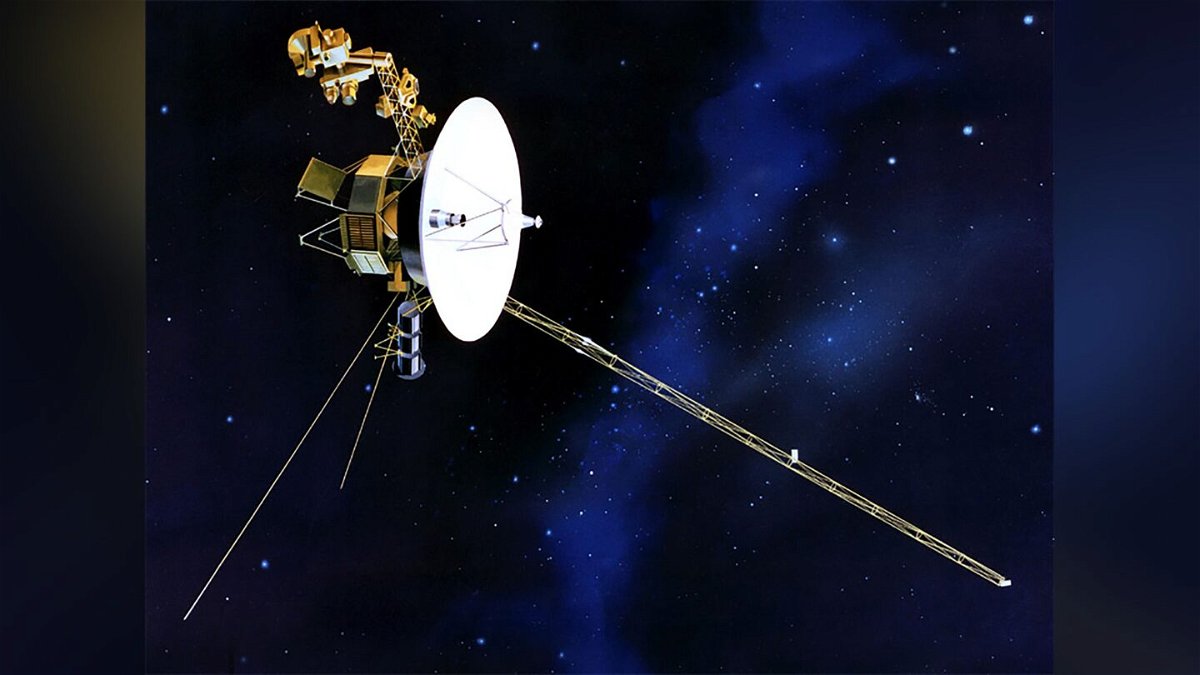Voyager 1 stops communicating with Earth

NASA’s Voyager 1 spacecraft has experienced a computer glitch that’s causing a bit of a communication breakdown between the 46-year-old probe and its mission team on Earth.
By Ashley Strickland, CNN
(CNN) — NASA’s Voyager 1 spacecraft has experienced a computer glitch that’s causing a bit of a communication breakdown between the 46-year-old probe and its mission team on Earth.
Engineers are currently trying to solve the issue as the aging spacecraft explores uncharted cosmic territory along the outer reaches of the solar system.
Voyager 1 is currently the farthest spacecraft from Earth at about 15 billion miles (24 billion kilometers) away, while its twin Voyager 2 has traveled more than 12 billion miles (20 billion kilometers) from our planet. Both are in interstellar space and are the only spacecraft ever to operate beyond the heliosphere, the sun’s bubble of magnetic fields and particles that extends well beyond the orbit of Pluto.
Initially designed to last five years, the Voyager probes are the two longest-operating spacecraft in history. Their exceptionally long lifespans mean that both spacecraft have provided additional insights about our solar system and beyond after achieving their preliminary goals of flying by Jupiter, Saturn, Uranus and Neptune decades ago.
But their unexpectedly lengthy journeys have not been without challenges.
Voyager 1 has three onboard computers, including a flight data system that collects information from the spacecraft’s science instruments and bundles it with engineering data that reflects the current health status of Voyager 1. Mission control on Earth receives that data in binary code, or a series of ones and zeroes.
But Voyager 1’s flight data system now appears to be stuck on auto-repeat, in a scenario reminiscent of the film “Groundhog Day.”
A long-distance glitch
The mission team first noticed the issue November 14, when the flight data system’s telecommunications unit began sending back a repeating pattern of ones and zeroes, like it was trapped in a loop.
While the spacecraft can still receive and carry out commands transmitted from the mission team, a problem with that telecommunications unit means no science or engineering data from Voyager 1 is being returned to Earth.
The Voyager team sent commands over the weekend for the spacecraft to restart the flight data system, but no usable data has come back yet, according to NASA.
NASA engineers are currently trying to gather more information about the underlying cause of the issue before determining the next steps to possibly correct it, said Calla Cofield, media relations specialist at NASA’s Jet Propulsion Laboratory in Pasadena, California, which manages the mission. The process could take weeks.
The last time Voyager 1 experienced a similar, but not identical, issue with the flight data system was in 1981, and the current problem does not appear to be connected to other glitches the spacecraft has experienced in recent years, Cofield said.
As both Voyager probes experience new trials, mission team members have only the original manuals written decades ago to consult, and those couldn’t account for the challenges the spacecraft are facing as they age.
The Voyager team wants to consider all of the potential implications before sending more commands to the spacecraft to make sure its operations aren’t impacted in an unexpected way.
Voyager 1 is so far away that it takes 22.5 hours for commands sent from Earth to reach the spacecraft. Additionally, the team must wait 45 hours to receive a response.
Keeping the Voyager probes alive
As the aging twin Voyager probes continue exploring the cosmos, the team has slowly turned off instruments on these “senior citizens” to conserve power and extend their missions, Voyager’s project manager Suzanne Dodd previously told CNN.
Along the way, both spacecraft have encountered unexpected issues and dropouts, including a seven-month period in 2020 when Voyager 2 couldn’t communicate with Earth. In August, the mission team used a long-shot “shout” technique to restore communications with Voyager 2 after a command inadvertently oriented the spacecraft’s antenna in the wrong direction.
While the team hopes to restore the regular stream of data sent back by Voyager 1, the mission’s main value lies in its long duration, Cofield said. For example, scientists want to see how particles and magnetic fields change as the probes fly farther away from the heliosphere. But that dataset will be incomplete if Voyager 1 can’t return information as it continues on.
The mission team has been creative with its strategies for extending the power supply on both spacecraft in recent years to allow their record-breaking missions to continue.
“The Voyagers are performing far, far past their prime missions and longer than any other spacecraft in history,” Cofield said. “So, while the engineering team is working hard to keep them alive, we also fully expect issues to arise.”
The-CNN-Wire
™ & © 2023 Cable News Network, Inc., a Warner Bros. Discovery Company. All rights reserved.